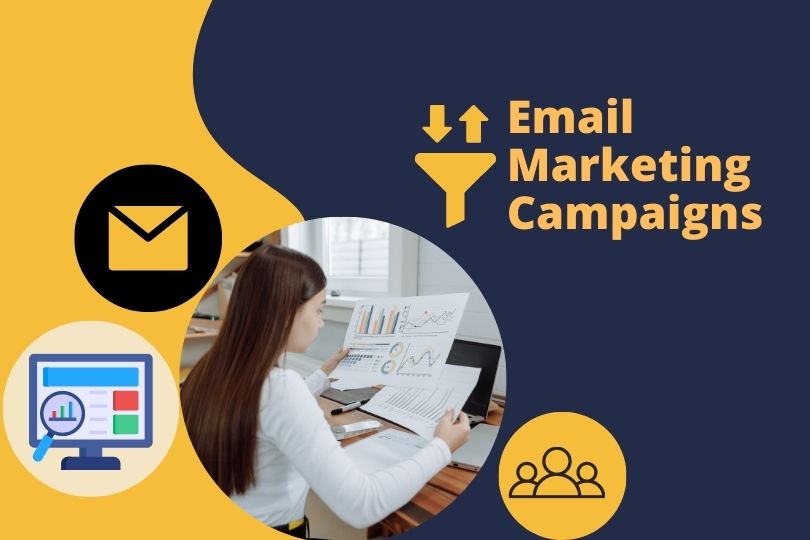- You are here:
- Home »
- Blog »
- Marketing »
- Lead Generation Mastery: Crafting Strategies for Market Influence

Lead Generation Mastery: Crafting Strategies for Market Influence
- Growth Marketing Tools
- / By Swapken Team
In the competitive business climate of today, lead creation following strategic lead generation mastery is a critical factor in success. It entails attracting and interacting with potential clients, turning them into leads, and nurturing those leads into devoted clients.
And, businesses can increase their customer base, increase sales, and gain a competitive advantage by implementing a well-thought-out lead generating plan.
Understanding the target audience is essential if you want to dominate the market. An effective lead generation strategy is shaped by comprehensive market research, data analytics, and in-depth buyer profiles.
Another essential component is the creation of compelling content. Businesses build authority and trust by producing high-quality, pertinent content in a variety of formats, including blog posts, ebooks, videos, and infographics. Attracting attention, fostering relationships, and turning leads into customers become realistic objectives.
Equally important is optimizing websites for lead creation. A solid foundation is built by including appealing calls-to-action, placing lead capture forms in the right places, and guaranteeing frictionless user experiences. The user journey is further improved by creating landing pages that are tailored to particular offers and audience preferences.
Social networking sites provide a wealth of chances for lead creation. Statistics shows, six hours a week of social media marketing are used by 66% of marketers to produce quality leads.
By interacting with the target audience through pertinent content, and utilizing social media advertising, promotions, and contests, you may increase your reach and draw in new leads. Real-time interaction using social listening techniques encourages deep ties.
Email marketing is still an effective method for developing leads. Marketing automation, tailored email campaigns, and content delivery allow for direct communication, the promotion of deals, and the delivery of useful information.
Lead generation efforts are boosted when search engine optimization (SEO) and paid advertising are used. In addition to providing targeted reach, paid advertising channels like Google Ads and social media ads also enhance visibility by optimizing websites and content for search engines.
For continued improvement, tactics must be continuously measured, analyzed, and improved. Data-driven decisions and optimization are influenced by monitoring important metrics, applying analytics tools, and getting insights into user behavior.
Last but not least, capturing, converting, and dominating the market requires a strong lead-generating plan. Understanding the target market, creating appealing content, optimizing websites, employing social media, utilizing email marketing, applying SEO and paid advertising, and generating high-quality leads are all ways to achieve unmatched success.
Following them, businesses may adjust and maintain a competitive edge through ongoing measurement, analysis, and improvement. Lead-generating power is unlocked for long-term growth and market supremacy.
So, let’s find more details on how to set up an effective plan and actionable strategy that might work best for the lead-generating roadmap as we imagined.
Mastering Lead Generation: Crafting a Strategy for Market Domination
Here are the seven steps of lead generation mastery that could enable you to build an actionable plan:
1. Understand Your Target Audience

A successful lead generation strategy is built on a solid foundation of understanding your target demographic. You may develop individualized and interesting marketing strategies that resonate with your target audience by delving deeply into their wants, problems, and preferences. Here are some crucial actions to do to better comprehend your target market:
1.1. Define your ideal customer profile
Create a thorough buyer persona or profile of your ideal client to get started. Think about details like age, gender, locality, occupation, and income level. Investigate other psychographic aspects like interests, values, actions, and difficulties. This profile will act as a starting point for figuring out the motives of your target audience and developing relevant messaging.
1.2. Conduct market research
To learn more about your target market, conduct in-depth market research. To learn more about market trends, client preferences, and pain concerns, look into industry studies, competition analyses, and customer surveys. Find market gaps and locations where your goods or services can add distinctive value.
1.3. Leverage data analytics
To get quantifiable information about your audience, use data analytics tools. To learn more about customers’ preferences, online routines, and purchase patterns, analyze website traffic, social media participation, and customer behavior trends. You may use this information to discover the most efficient marketing channels, improve your campaigns, and come to informed judgments.
1.4. Engage with your audience
Engage your target market directly by conducting surveys, interviews, and focus groups. To better grasp their difficulties, goals, and aspirations, pose open-ended inquiries. Pay close attention to their recommendations, grievances, and criticism. Engaging with your audience not only offers insightful information but also enhances the bond between your brand and potential clients by fostering trust.
1.5. Monitor social media conversations
The audience you are trying to reach can be found in great detail on social media platforms. To learn about the interests, problems, and mood of your target market, keep an eye on talks about your sector, products, and rivals. Track keywords, hashtags, and mention usage with social listening tools. Participate in pertinent debates to position oneself as a sector expert and receive knowledge from face-to-face encounters.
1.6. Analyze customer data
Analyze the data you already have on your customers to find patterns and trends. Look for recurring traits, buying tendencies, and preferences among your current clientele. You may improve your ideal customer profile and find possibilities to upsell, cross-sell, or target related client categories by analyzing this data.
1.7. Stay updated
Your target audience’s wants and tastes may change. Keep abreast of market changes, technology breakthroughs, and industry trends. Reevaluate your target market frequently, and make necessary adjustments to your lead creation plan.
You can create a lead generation plan that speaks directly to your target audience’s demands, grabs their attention, and produces qualified leads by taking the time and effort to understand your target market. Remember that you will be better able to create targeted and effective marketing efforts the more you understand your audience.
2. Create Compelling and Relevant Content

To grab your target audience’s attention and develop them into qualified leads, you must produce captivating and pertinent content. You may position your brand as a respected authority in your sector by giving people useful information, resolving their problems, and showing your knowledge. Here are some essential stages to creating an efficient content marketing strategy:
2.1. Understand your audience's preferences
Learn as much as you can about the content tastes of your target audience. Determine the genres of information they enjoy, such as social media posts, blog articles, ebooks, videos, or podcasts. Find out which platforms and channels they like to use to consume content, whether it comes from websites, social media, email newsletters, or trade publications. This information will help you create content that connects with your audience.
2.2. Develop a content strategy
Create a content plan based on the preferences of your audience and how it will help you achieve your company’s goals. Set objectives for consumer education, thought leadership, lead creation, and brand recognition. Decide on the main themes and subjects that are important to your industry and audience. To plan and organize your timetable for producing and distributing content, use a content calendar.
2.3. Create high-quality, valuable content
Concentrate on creating content that truly benefits your audience. Address their problems, respond to their inquiries, and give them useful information. Make sure your content is thoroughly researched, accurate, and current. To make your information relatable and interesting, use storytelling tactics, case studies, and real-world examples. To improve your content’s usability and aesthetic appeal, add visual elements like infographics, videos, and photographs.
2.4. Optimize for search engines
Use search engine optimization (SEO) strategies to make your material more visible in search engine results. To find relevant keywords and include them naturally in your text, conduct keyword research. To improve the searchability of your material, optimize the meta tags, headings, and URLs. To boost the authority of your content and increase search engine results, create both internal and external links.
2.5. Utilize lead capture mechanisms
Use lead capturing tools that are integrated into your content to turn visitors into leads. To encourage readers to take the required action, such as signing up for your newsletter, downloading a resource that is password-protected, or requesting a free consultation, including engaging calls-to-action (CTAs). To gather relevant contact information and produce leads, carefully integrate lead capture forms into your content.
2.6. Promote and distribute your content
Create a distribution plan to make sure your material reaches the right people. Submit your work to relevant online groups, industry forums, and social media sites. Utilize email marketing to promote your content to the subscribers you already have. To increase the audience for your material, team up with influencers or subject matter experts. To increase the exposure of your most valuable content, think about paying for advertising.
2.7. Measure and optimize
Utilize analytics tools to frequently evaluate how well your material is performing. Keep track of statistics like website visitors, social media shares, engagement rates, and lead conversions. Examine the data for trends, learn which types of material are most popular with your audience, and adjust your plan as necessary. To continuously increase the impact of your material, try out various formats, subjects, and delivery methods.
You may attract and engage your target audience, establish brand authority, and nurture leads throughout their buyer’s journey by publishing intriguing and pertinent content regularly. To stay ahead of the competition, keep in mind to pay attention to your audience, modify your content strategy based on their input, and consistently improve your strategy.
3. Optimize Your Website for Lead Generation

A website including a powerful blogging system is essential for mastering your powerful lead generation process. The key to optimizing the impact of your online presence and converting website visits into worthwhile leads is to optimize your website for lead generation. The following are important stages for website lead-generating optimization:
3.1. Clear and compelling Calls-To-Action (CTAs)
Place CTAs that are both obvious and pleasing to the eye throughout your website to direct users toward desired actions. Use wording that encourages users to interact with your content, like “Sign up for a free trial,” “Download the ebook,” or “Request a consultation.” Make sure your CTAs are easy to click on and stand out.
3.2. Strategic lead capture forms
To gather important contact information from your website, and visitors, effectively incorporate lead capture forms. Put forms on sites that get a lot of traffic, like your homepage, blog posts, or product or service pages. Ask for only the information that is necessary, such as your name and email address, on short, simple forms. To entice visitors to share their information, think about providing rewards like discounts or access to unique material.
3.3. User-friendly navigation and layout
Make sure the navigation on your website is clear and simple so that users can quickly discover the content they’re looking for. Improve search capabilities, categorize content into logical categories, and simplify menus. Marked headers, subheadings, and bullet points will help readers scan your information. If you want to offer a consistent user experience on various screen sizes, optimize your website for mobile devices.
3.4. Tailored landing pages
For particular marketing campaigns or offers, create unique landing pages. Make these pages specific to your target audience’s requirements and interests. Create attention-grabbing headlines, succinct descriptions, and convincing pictures that showcase the advantages of your product. To effectively collect visitor information, make sure your landing pages feature a call to action (CTA) that is obvious and a lead capture form.
3.5. Provide valuable content and resources
Provide excellent resources and information that address the problems and issues your target audience is facing. This can be done through the use of articles on blogs, ebooks, whitepapers, case studies, or videos. Put some of these materials behind lead capture forms while keeping others easily available on your website. With this strategy, you may give your visitors something of value while also getting their contact details.
3.6. Optimize website load speed
User experience (UX) and search engine optimization (SEO) both depend on a website’s performance. Use browser caching, CSS and JavaScript minification, and image compression to increase the speed at which your website loads. In addition to increasing user satisfaction and lowering bounce rates, websites that load quickly also have a higher chance of converting visitors into leads.
3.7. Test and analyze website performance
Test and evaluate your website’s performance frequently to find areas that could be made better. Use website analytics software to monitor parameters like bounce rates, time on page, and conversion rates. To increase conversions, run A/B tests on different aspects of your website, such as CTAs, form location, or landing page designs.
You can build a conversion-focused online presence that motivates visitors to take action and convert to leads by optimizing your website for lead generation. Ensure user-friendly navigation, implement obvious CTAs, strategically put lead capture forms, offer good content, and periodically monitor website performance. By doing this, you may maximize the number of leads generated and raise the general efficacy of your lead-generation initiatives.
4. Leverage Social Media Platforms

The use of social media platforms by businesses to successfully connect and interact with their target audience has made them potent tools for generating leads. Here are some tips on how to use social media platforms to improve your lead-generation efforts:
4.1. Identify the right platforms
Choose the social media channels where your target audience is most active. To learn where your audience spends their time, look into demographic information and user statistics. Concentrate your efforts on social media sites like Facebook, Instagram, LinkedIn, Twitter, or industry-specific sites that correspond to the interests of your target market.
4.2. Create valuable and engaging content
Create a content plan that is customized for each social media channel. Produce and distribute material that is interesting, educational, and useful to your audience. To draw interest and promote interaction, mix text with photos, videos, infographics, and other media. Display your knowledge, respond to inquiries, and address the problems of your audience.
4.3. Utilize social media advertising
Utilize social media advertising to broaden your audience and focus on particular consumer segments. To make sure that the people who are most likely to convert into leads see your adverts use demographic and interest-based targeting choices. Create eye-catching ad creatives with alluring headlines, obvious CTAs, and intriguing imagery. Based on performance indicators like click-through rates, conversions, and cost per lead, track and improve your advertising efforts.
4.4. Run contests and giveaways
Through competitions and prizes, you may engage your audience and promote lead generation. Create alluring giveaways that ask participants to provide their contact information for a chance to win. On your social media channels, encourage participants to promote the competition or giveaway with their contacts. This not only produces leads but also broadens brand recognition and reach.
4.5. Implement social listening
Use social listening tools to keep an eye on discussions and mentions about your business, brand, or goods/services. You may find prospective leads, respond to customer questions, and have in-person dialogues with your audience by actively listening to them. You may demonstrate that you respect client engagement and are genuinely interested in their requirements by swiftly responding to comments, messages, and mentions.
4.6. Build relationships and nurture leads
Use social media to interact with your audience by leaving comments, posing inquiries, and sharing insightful information. Take an active role in talks about the relevant industry and offer useful knowledge. You may increase the likelihood that leads will convert into customers by developing relationships with them and nurturing them over time through consistent interaction.
4.7. Track and analyze social media metrics
Track the success of your social media activities by using social media analytics tools. Keep track of analytics like reach, click-through rates, engagement rates, and conversions. Determine which lead-generating content and strategies are most effective by analyzing the data. Make use of these insights to enhance your lead-generation efforts and social media strategy.
Numerous options exist on social media sites for lead generation. You may effectively use social media to attract, engage, and convert leads into customers by choosing the correct platforms, producing worthwhile content, using social media advertising, holding contests, adopting social listening, developing connections, and tracking performance. To enhance your lead generation success, keep in mind to modify your strategy based on the preferences and actions of your target audience.
5. Implement Email Marketing Campaigns

Email marketing is still a successful approach for generating leads because it enables you to interact with your audience directly and guide them through the buying process. Here are some tips for putting into practice effective email marketing campaigns:
5.1. Build a quality email list
Concentrate on developing a top-notch email list of people who have shown interest in your goods, services, or information. To gather email addresses, use lead capture forms on your website, landing sites, and social media channels. To entice sign-ups and guarantee compliance with email marketing laws and best practices, provide incentives like exclusive content or discounts.
5.2. Segment your email list
Based on demographics, interests, behavior, or any other relevant factors, divide your email list into segments. This enables you to send targeted and customized communications to various lead groups. Increase the likelihood of engagement and conversion by addressing the unique needs and preferences of each segment with your content and offers.
5.3. Craft compelling and personalized emails
Create captivating email content that appeals to your readers and has eye-catching subject lines. By addressing recipients by name and adjusting the content to reflect their interests or previous contacts with your company, you can personalize your emails. Make your emails visually appealing and simple to read by writing in a conversational style, using simple formatting, and including interesting images.
5.4. Provide valuable content and offers
Providing value is the best part of conversion marketing strategies as well. So, send your email subscribers informative and timely material. This can be in the form of blog posts, ebooks, case studies, webinars, or special offers. Provide them with educational materials that address their problems and offer remedies. Make sure your content delivers value and nudges prospects toward making a purchase.
5.5. Implement marketing automation
Automate your email marketing initiatives by using marketing automation solutions. Create automatic processes that send emails in response to predefined events or behaviors, such as follow-ups after downloads, welcome emails, or reminders for abandoned carts. You can nurture leads effectively, send out emails on time, and offer timely and pertinent communications with the help of automation.
5.6. Test and optimize your campaigns
Test various aspects of your email messages frequently to improve performance. To find out what appeals to your audience the most, test different subject lines, email copy, CTAs, and images. A/B testing can be used to evaluate several variations and assess the effect on open rates, click-through rates, and conversions. To enhance your email marketing strategy, examine campaign stats and make data-driven decisions.
5.7. Monitor and analyze results
Monitor and evaluate important email marketing KPIs, such as open rates, click-through rates, conversion rates, and unsubscribe rates. Observe subscriber behavior, campaign effectiveness, and engagement trends. Utilize this information to boost the efficacy of your lead generation campaigns by fine-tuning your email approach, improving your targeting, and more.
You may nurture leads, provide worthwhile content, and directly advertise special deals to your audience by executing targeted and tailored email marketing campaigns. To improve your lead generation outcomes, use segmentation, write engaging emails, offer helpful content, put automation into place, and test and review your campaigns frequently.
Always keep in mind that a well-executed email marketing campaign may create a direct channel of communication with your leads, helping them to convert and develop lasting customer relationships.
6. Utilize SEO and Paid Advertising

Use both paid advertising and search engine optimization (SEO) techniques to make the most of your lead-generation efforts. Here’s how to use SEO and paid advertising to increase your internet presence and produce leads:
Search Engine Optimization (SEO):
6.1. Keyword research
Lead generation mastery refers to conduct in-depth keyword research to find the words and phrases your target market uses to look for goods and services like yours. Concentrate on long-tail keywords that are more relevant to your industry and have less competition. Include these keywords naturally in the headings, titles, meta tags, and body text of your website.
6.2. On-page optimization
To increase your website’s visibility on search engines, optimize the on-page components. This entails optimizing meta tags, such as title tags and meta descriptions, using useful keywords and click-bait copy. Make sure that the navigation on your website is simple and user-friendly. Use header tags (H1, H2, etc.), internal linking, and descriptive URLs to enhance both user experience and search engine crawlability.
6.3. Quality content creation
Create informed, interesting content that meets the requirements and interests of your audience. Create blog posts, articles, and other content types that naturally include your goal keywords. Update your website frequently with new content to establish your authority and relevance in your sector. This can support your SEO efforts by luring backlinks from other respectable websites.
6.4. Link building
Build high-quality backlinks from reliable and pertinent websites to increase the authority of your website and raise its search engine ranks. Guest writing, contacting influencers or business titans about teaming up, or joining directories for your industry are all ways to accomplish this. Avoid spammy or subpar link-building strategies because they can undermine your SEO efforts.
Paid Advertising:
6.5. Google Ads
Utilize Google Ads to create tailored pay-per-click (PPC) campaigns. Choose keywords that are pertinent to your company and place a bid on them to make your advertising stand out in search engine results. To encourage clicks and conversions, provide interesting ad language with obvious CTAs. Make use of tools like ad extensions to add more details and improve ad visibility.
6.6. Social media advertising
Run targeted advertising efforts using social media sites like Facebook, Instagram, Twitter, and LinkedIn. Use the diverse targeting possibilities provided by the platforms to connect with certain demographics, interests, and behavior types. To grab your audience’s attention and motivate them to take action, use engaging advertisement images and captivating advertisement copy.
6.7. Display advertising
Implement display ad networks to display your ads on pertinent websites all over the internet. Advertisements that are displayed may be banner, video, or native. Create eye-catching, attention-grabbing creatives that are consistent with your brand and messaging. To reach audiences interested in your sector, either use contextual targeting or target particular websites.
6.8. Retargeting campaigns
Use retargeting advertising to connect with website visitors who have already been to your site but didn’t become leads. To remind customers of your company, its goods, or services, and to persuade them to take the appropriate action, show them targeted adverts. Display adverts for the precise goods or services they looked at using dynamic retargeting.
Keep a close eye on the results of your SEO and paid advertising activities. Track KPIs like organic traffic, click-through rates, conversion rates, and return on investment (ROI) using analytics tools. To continuously optimize your lead generation efforts, make adjustments to your plans depending on the information and insights gathered.
You can increase your online presence, attract a larger audience, and produce quality leads for your organization by combining efficient SEO strategies to boost organic visibility with targeted paid advertising efforts.
7. Measure, Analyze, and Refine

Refine your lead-generating tactics based on the data and research to maximize results. Here are several ways to monitor, evaluate, and improve your lead-creation efforts:
7.1. Define key performance indicators (KPIs)
Choose the metrics that support your objectives for lead creation. Conversion rates, click-through rates, lead quality, cost per lead, and return on investment (ROI) are examples of typical KPIs. To keep track of your progress and gauge the effectiveness of your strategy, set explicit goals for each KPI.
7.2. Utilize analytics tools
Use powerful analytics programs like Google Analytics to measure and examine visitor behavior, website traffic, and conversion information. These tools offer insightful data on how visitors use your website, which pages lead to the greatest conversions, and where visitors lose interest during the conversion process. Make data-driven judgments using this information to determine areas that need improvement.
7.3. Conduct A/B testing
Examine user behavior information in-depth to learn how leads are interacting with your website and content. To discover patterns and popular regions of your website, analyze heatmaps, click maps, and scroll maps. By properly positioning lead capture forms and CTAs on your website, you may optimize its navigation and layout.
7.4. Analyze user behavior
Test user behavior information in-depth to learn how leads are interacting with your website and content. To discover patterns and popular regions of your website, analyze heatmaps, click maps, and scroll maps. By properly positioning lead capture forms and CTAs on your website, you may optimize its navigation and layout.
7.5. Implement lead tracking and attribution
Create lead tracking systems to keep track of where your leads are coming from. You can determine which marketing channels and campaigns are generating the most qualified leads by using UTM parameters, tracking pixels, or CRM connectivity. You may assign responsibility for various lead-generation touchpoints and better understand the customer journey with the aid of attribution modeling.
7.6. Seek customer feedback
Utilize surveys, polls, or direct communication to ask your customers for feedback. Know their annoyances, inclinations, and levels of satisfaction. This feedback can give you important information about how to improve your lead generation techniques, your product offerings, and the overall customer experience.
7.7. Continuously refine your strategies
Refine your lead-generating plans and methods based on the learnings from measurement and analysis. Improve the alignment of your website, landing pages, messaging, and content with the needs and preferences of your target market. Try out new communications strategies, campaigns, or channels to keep one step ahead of the competition and adjust to shifting market conditions.
Keep in mind that lead generation is a continuous activity. Review and improve your plans frequently using data-driven insights. To be competitive, keep up with market trends, consumer trends, and emerging technology. You can capture, convert, and dominate your target market over time by consistently measuring, evaluating, and improving your lead generation activities.
Conclusion
Lead creation is an essential component of every effective business plan. The secret of better lead generation mastery goes with the power of creation by knowing your target market, developing engaging content, optimizing your website, utilizing social media, putting email marketing into practice, applying SEO and paid to advertise, and consistently evaluating and improving your efforts.
A carefully designed lead generation campaign will fascinate your audience, turn them into devoted clients, and ultimately aid in your market dominance. Take decisive action to drive your company toward unheard-of growth and success by embracing the potential of lead generation.
About the Author Swapken Team
Swapken Team is organized and led by a small group of conversion marketing enthusiasts. It loves to publish content that works for bloggers, small business entrepreneurs, and eCommerce owners. In the fast-evolving marketing arena, swapping actionable ken is its motto. It is curiously passionate to dig out "what's working" in the way of online business marketing with powerful tools, software, or platforms for better traffic and conversion.
